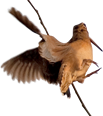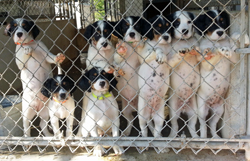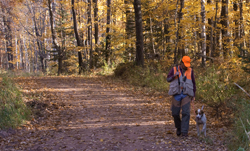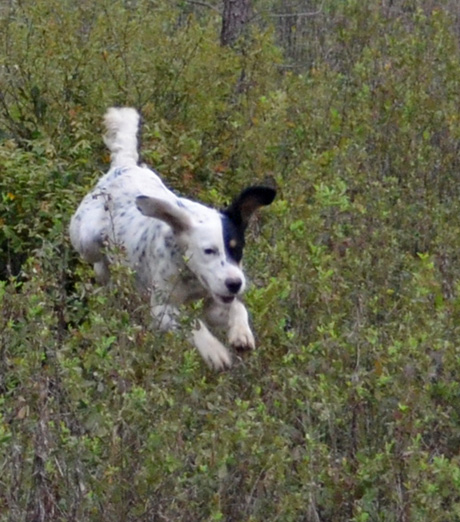To point a bird, first a dog has to find it
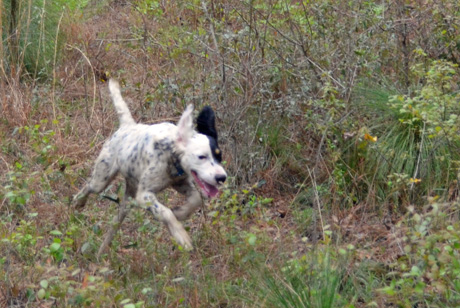
Inherited talent and ample exposure to opportunity are crucial elements to a pointing dog’s bird-finding skills. (Northwoods Nickel, CH Shadow Oak Bo x Northwoods Chardonnay, 2014)
“That dog’ll hunt!” exclaimed Bobby, dog trainer on a large Georgia quail plantation, while we were out working puppies last week.
Bobby was referring to the bird-finding ability of his young pointer—a dog that was focused exclusively on finding quail. Bobby has been training bird dogs for more than 20 years and knows what’s essential.
“They’ll all point,” he said, “but give me the one that finds the most.”
Bobby is right. You can’t teach a dog to find birds. You can teach it to heel, come and whoa but if it doesn’t have the inherited talent to search for and to find birds, all you have is a well-trained dog. Those instincts, however, will never be maximized without opportunity—and plenty of it. Even then, some dogs given equal opportunity will be better at finding birds. No one really knows what produces that proficiency. Is it above-average scenting capability, intelligence, ability to focus? Or a combination? Or something else?
The degree of difficulty to finding birds depends on the birds. Non-wild birds such as put-out quail or game farm pheasants are generally easy to find. They usually have little idea of where they are or where to go and so, unknowingly, they become exposed.
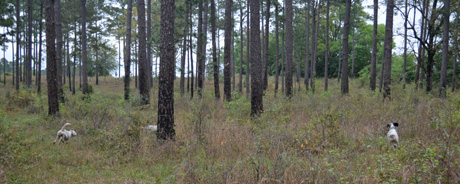
Working puppies in groups is a fun, productive way to provide bird-finding opportunities because the puppies learn from each other. (Three females out of CH Shadow Oak Bo x Northwoods Chardonnay, 2014)
Wild birds are the most difficult to find. They know every square foot of their own territory—from exactly where they are to exactly where they’re going. They move a lot during the day—to find food, loaf, dust and avoid predators—and most of that movement is done by walking. Their scent is left on the ground by their feet, droppings and feathers and on plants by brushing against them.
Finding wild birds is easiest when the bird is stationary and the dog hunts by that exact spot. Most of the time, though, the dog smells leftover scent. It learns to follow that little wisp of scent until it becomes progressively stronger, ultimately leading to the location of the bird.
Another experienced plantation dog trainer, Phillip, would agree. A man wanted to sell him a young dog, pointing out conformation, markings and other physical qualities and boasting about all the champions in its pedigree. Phillip wasn’t impressed. Instead, he looked the man straight in the eye and asked, “Yeah, but can it find a bird?”

